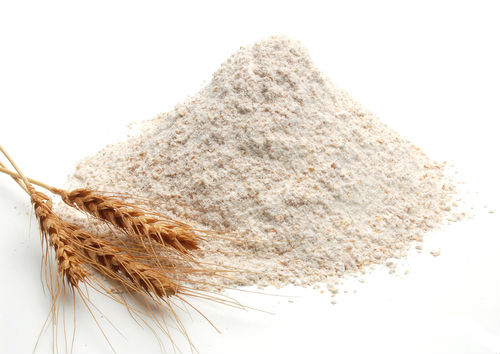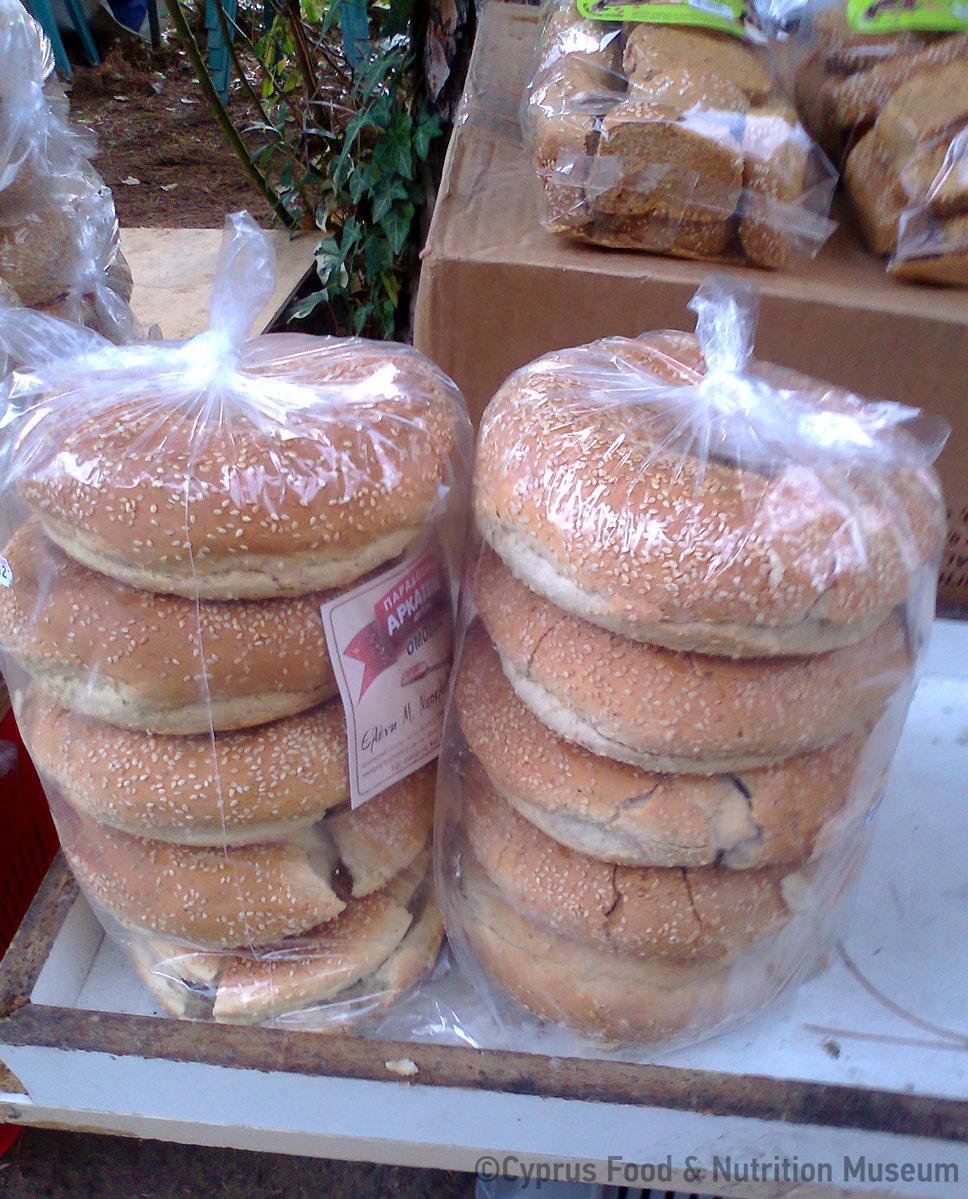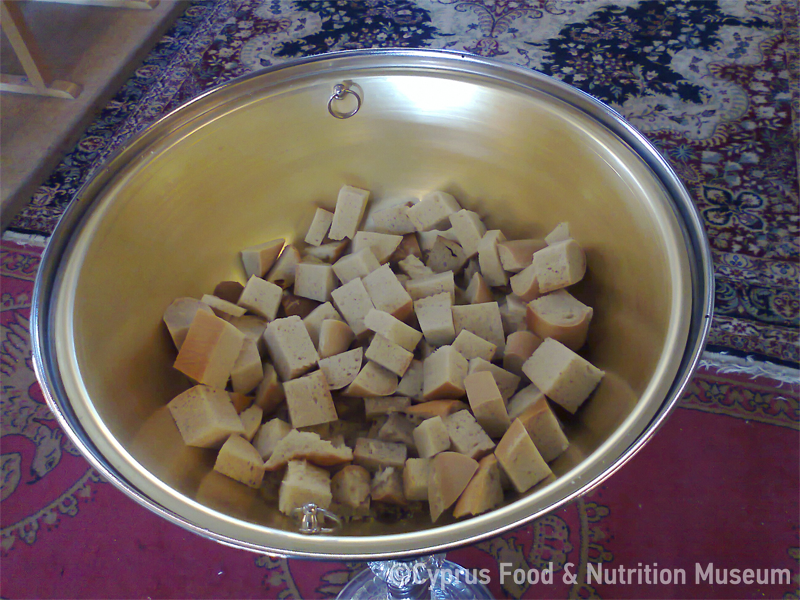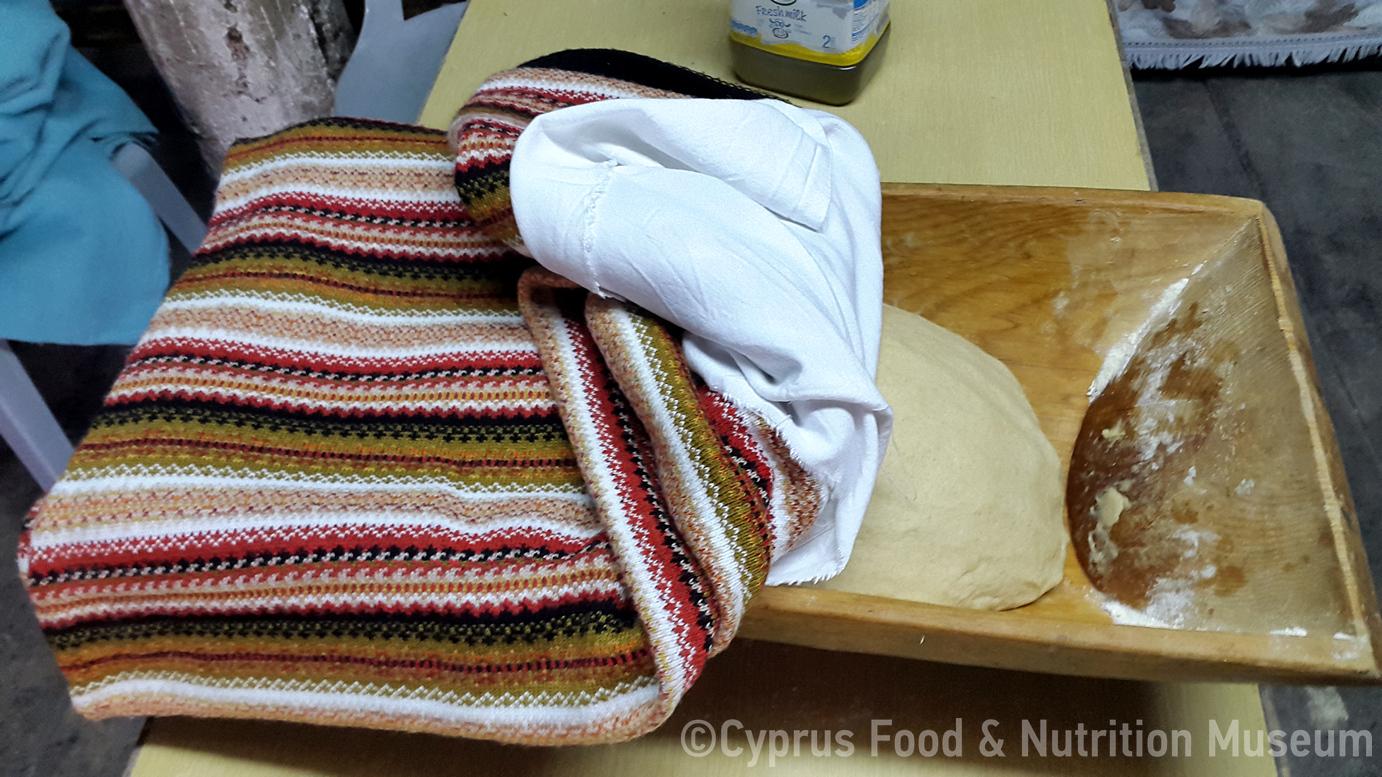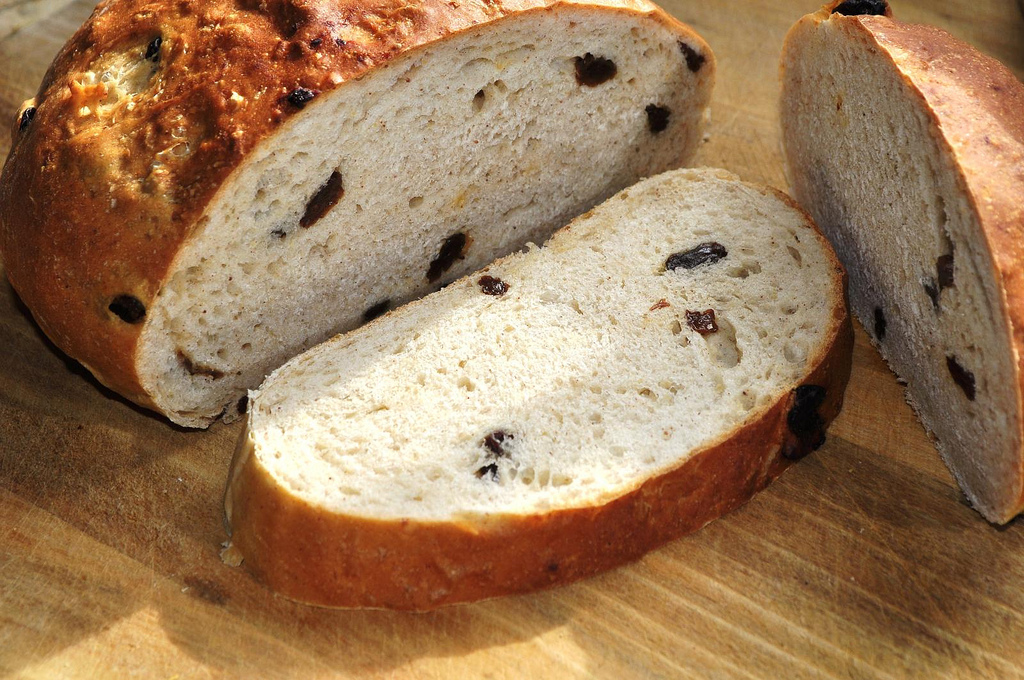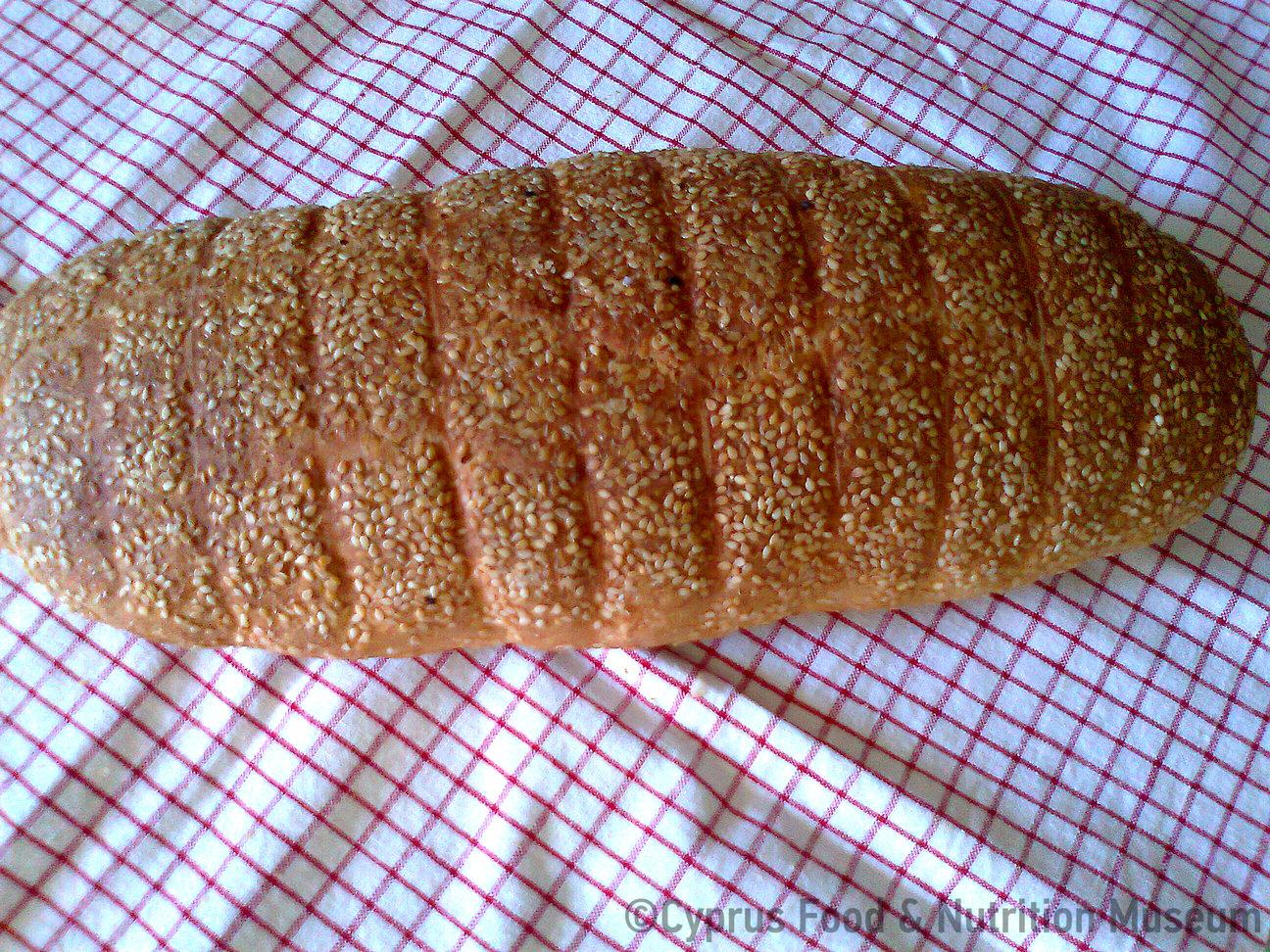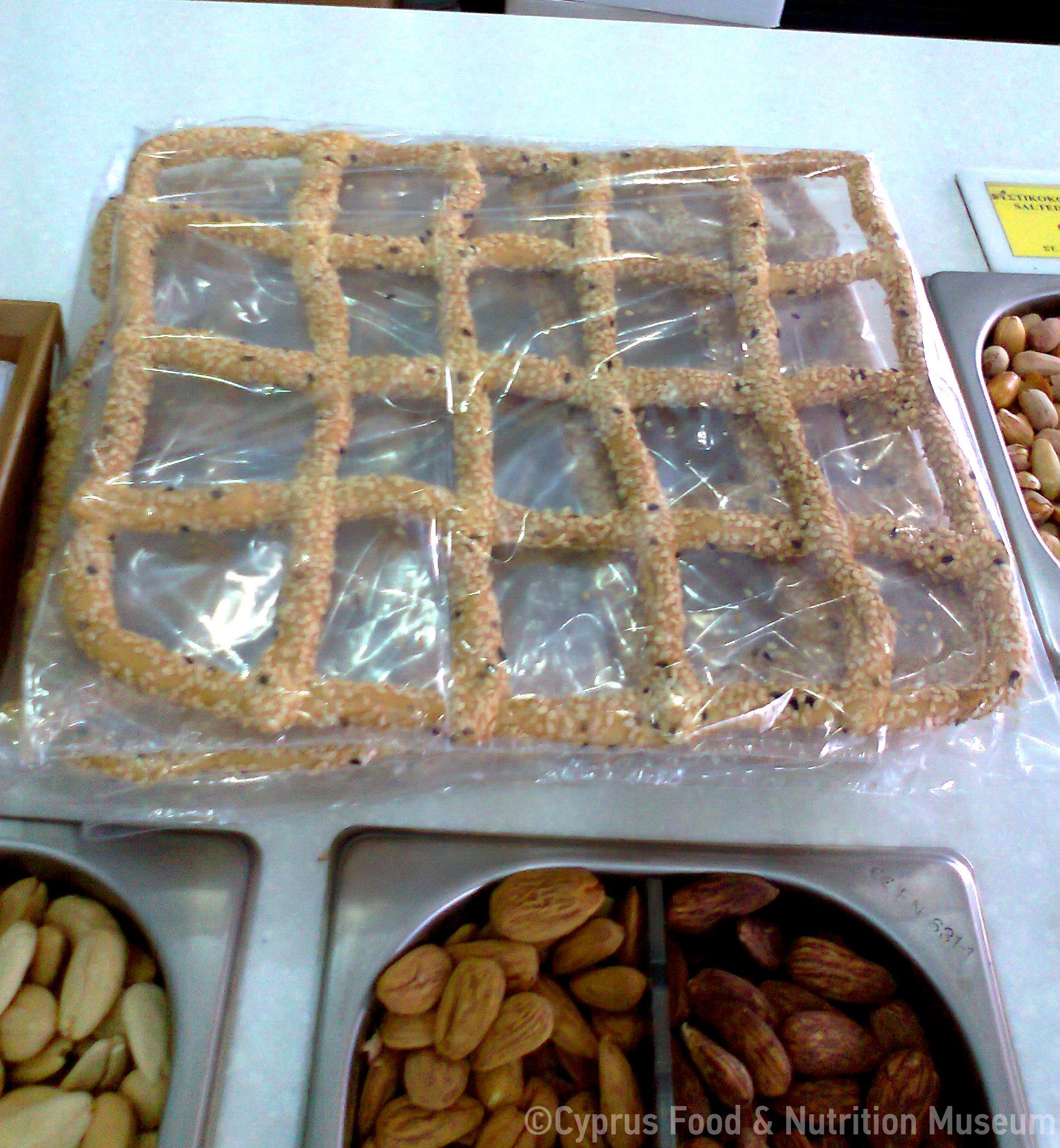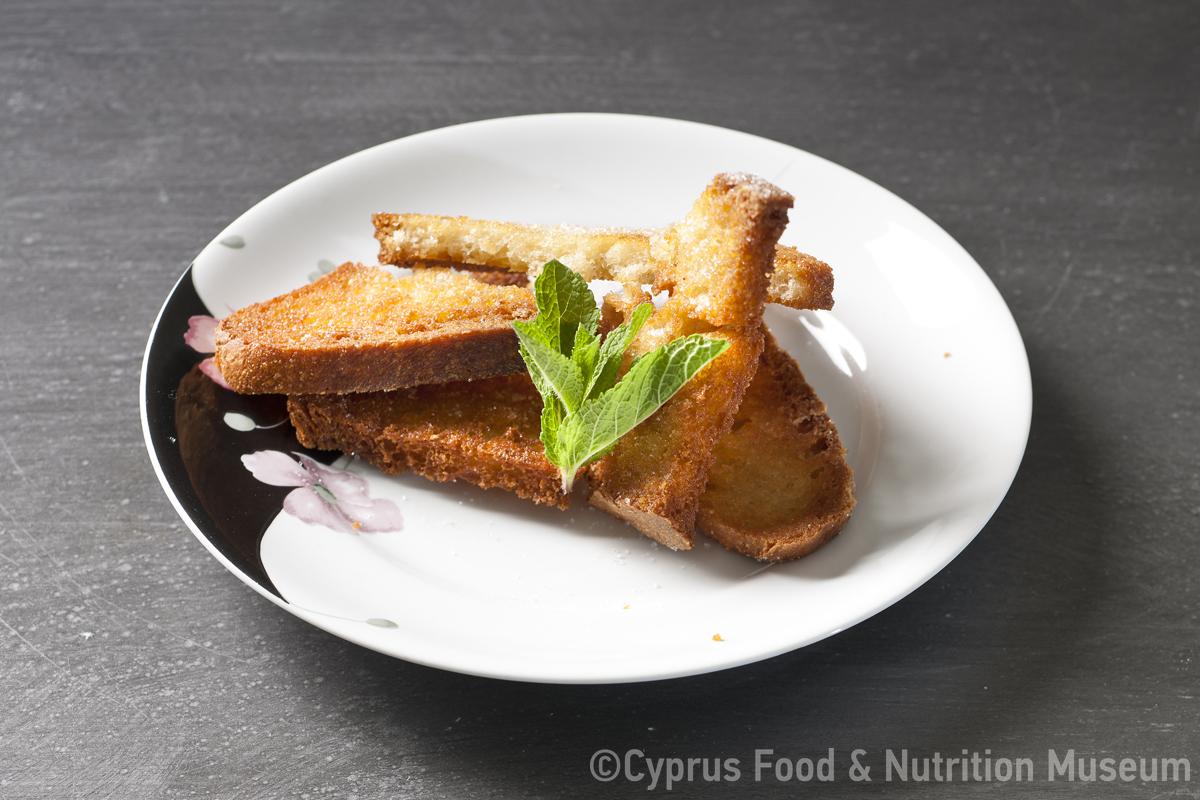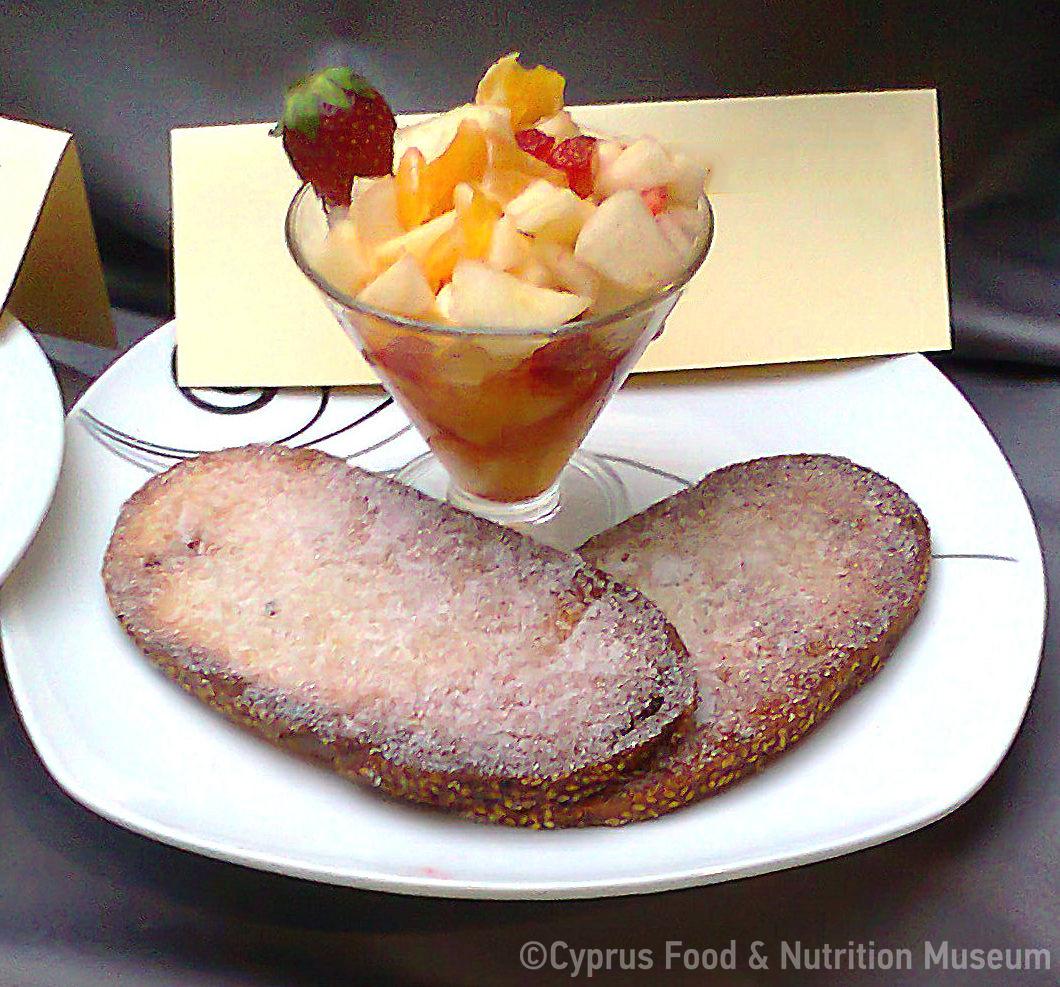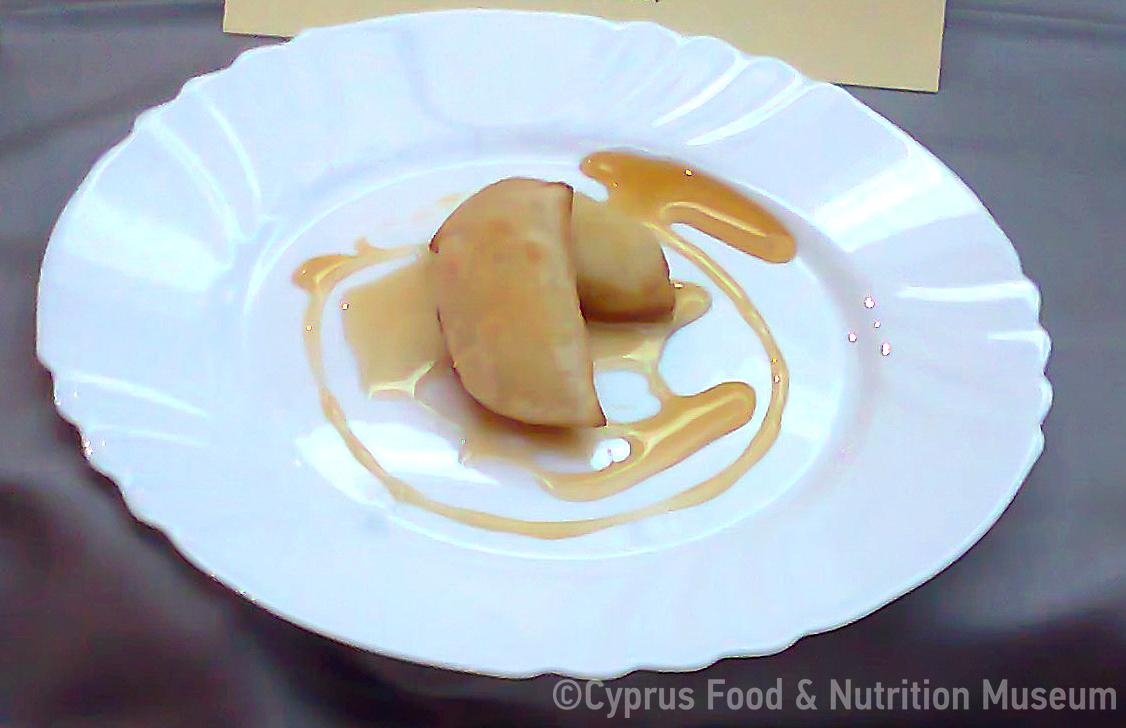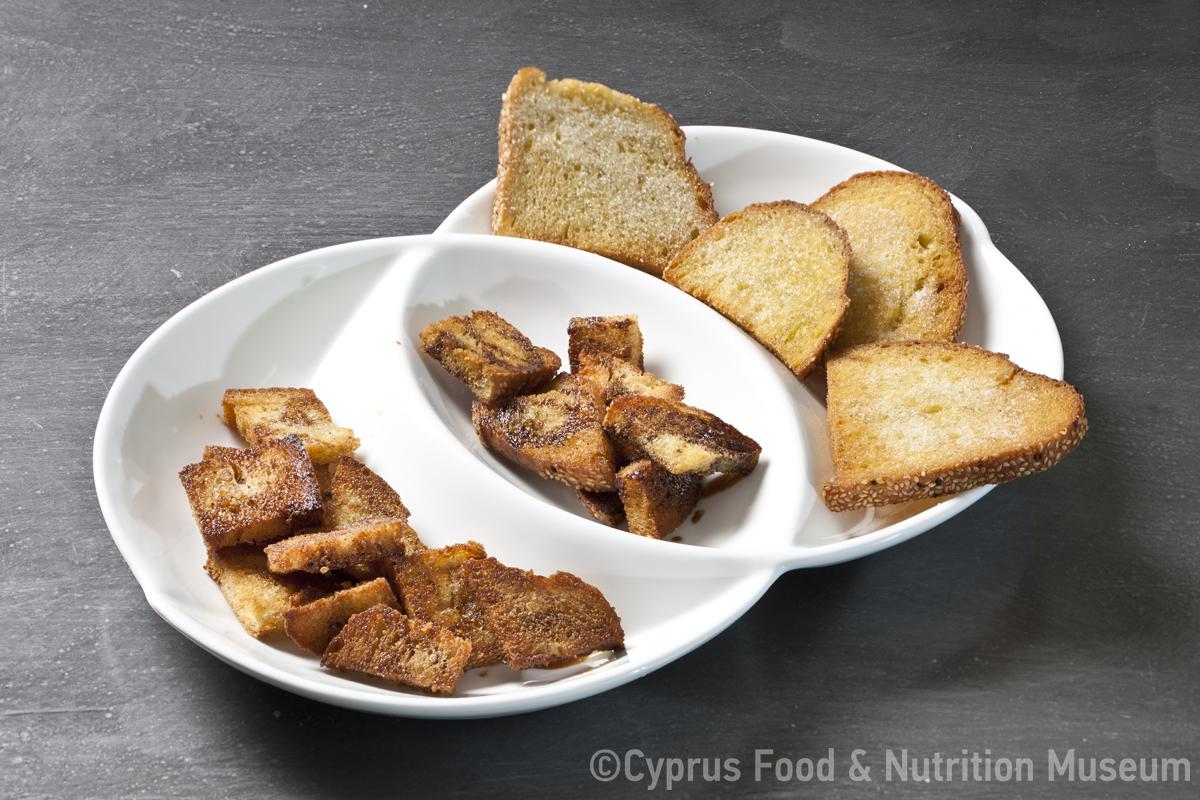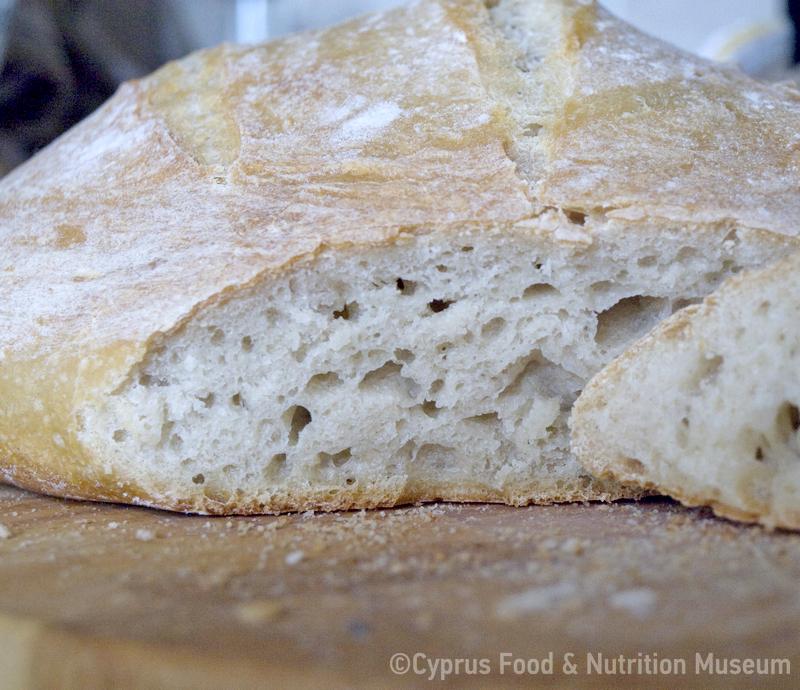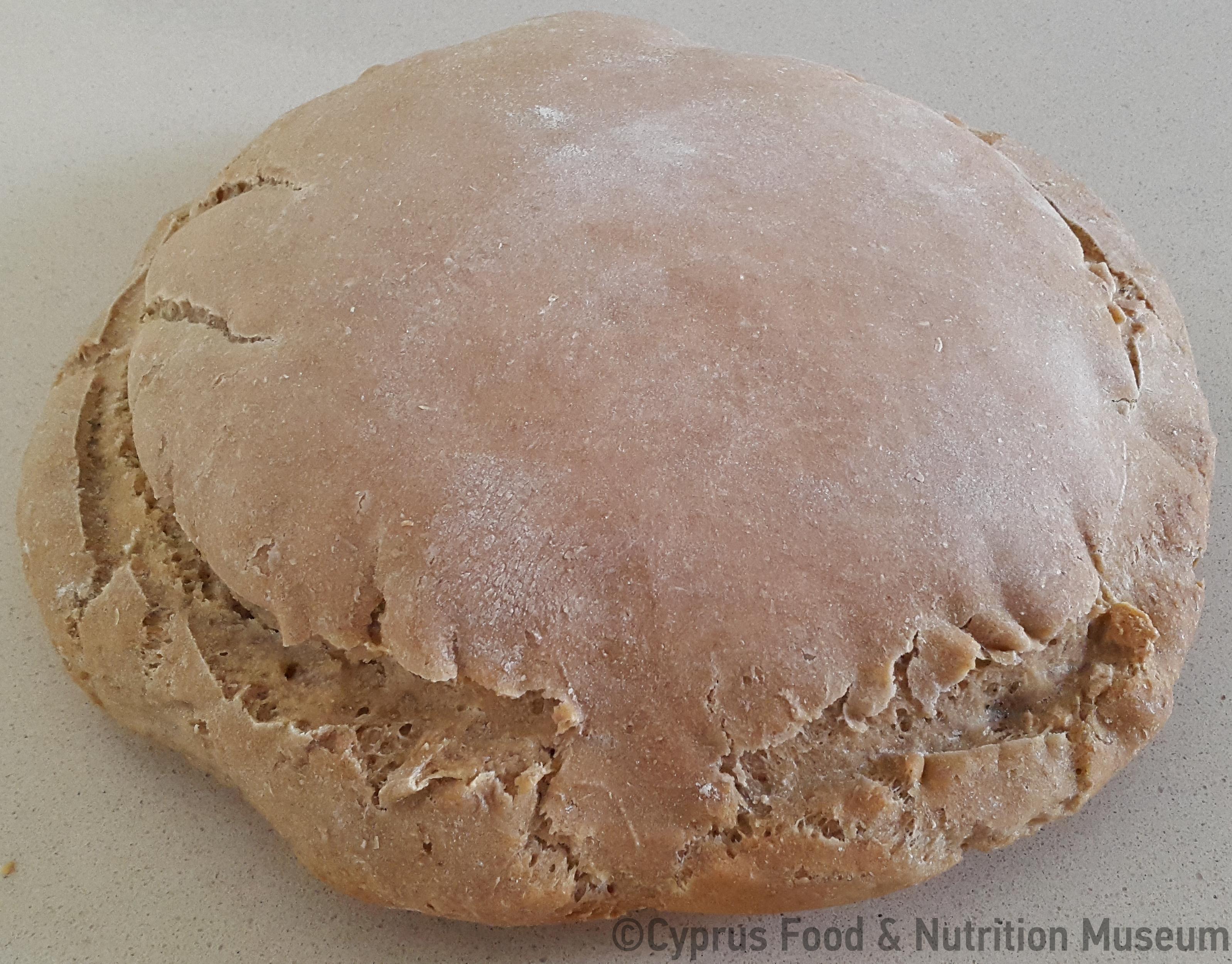Bread, rusks, glystarka, arkatena, trimithopitta, pannihida.
Name - Origin
The author finds that Cypriot flour is dark in colour; even the best wheat bread is never white in colour. She notices that homemade bread is sold to foreigners in the village kafeneio (coffee shops). They bake bread using wheat, barley or a mixture of the two.
Often, along with bread, they bake rusks using various methods. The most common type of rusk, which is about the size of a small fist, is called "poxamátin". It can be stored for months, just like the rusks served on ships, and it is usually soaked (in tea or milk) before consumption. They also like baking a kind of soft rusk that is sprinkled with sesame seeds and is round in shape, called koulloúri. Glystarká is a harder type of rusk, made with the finest flour and sesame seeds. It is completely flat and thin and has about the size of a hand. At a certain mountain location, the well-known "poxamatia tou ergati" (worker's rusks) is baked from a mixture of grains, broad beans and chickpea flour; it is a rustic delicacy that when consumed while it is fresh, it has a very nice and strong taste. It is customary for villagers when baking bread to bake many small koulloúri, which are consumed fresh. Trimithopitta is particularly popular; the 'trimithi' seeds, which smell and taste like a peanut plant of a particular variety that grows in Cyprus, are mixed into the dough. Pannyhida is a bread type offered in church along with kollyva; it is a delicious wheat bread made with little or no yeast. A seal with a cross is placed in the top centre of this sweet bread (Ohnefalsch-Richter, 1900, pp.66, 96, 100-101).
There are few professional bakers, and these can be found only in the cities, since women, particularly Greek housewives, prefer to bake their own bread. The author is impressed by the method of kneading and describes how it is done in wooden troughs and using only a small amount of sourdough starter, while the dough is only left for a bit of time to rise. The sourdough starter would be stored in box-shaped gourds. The shaped loaves are placed in the twelve moulds carved into a long wooden board. Every housewife has one or more of these boards which ar then carried to the wood-fired oven; once the bread loaves are baked, they are placed on the board and carried back to the provisions room (Ohnefalsch-Richter, 1900, pp.66, 96, 100-101)
Additional information and bibliography
We arrived in a village very late at night, we were not expected and we were hungry. We were welcomed very hospitably, but there was nothing in the house to eat, not even a piece of bread, not even a bit of flour. That's when the hand-mill went into action. And what a pleasure we felt when the women brought us fresh bread made from that flour, which we ate with butter... (Ohnefalsch-Richter, 1900, p.96)
Ohnefalsch-Richter M. (ca. 1900), Ελληνικά Ήθη και Έθιμα στην Κύπρο, Μαραγκού Α. (μτφρ.), Popular Bank Cultural Centre, Nicosia, 1994.
Anna Marangou, Stalo Lazarou
